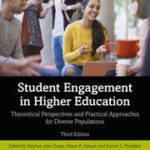Rtl, or Response to Intervention, is an educational approach that aims to identify and support struggling students through a multi-tiered system of interventions. By providing targeted instruction and monitoring progress, Rtl helps educators to address students’ individual needs and improve learning outcomes.
Effective classroom instruction is vital for every student’s success. However, not all students grasp concepts at the same pace or with equal ease. Some may struggle with certain subjects or skills, while others may need additional support to overcome learning challenges.
This is where Rtl comes in. Rtl is an evidence-based strategy designed to identify students who are struggling academically and provide them with the necessary interventions and supports. It operates on the principle that early intervention is key to preventing academic difficulties from becoming more severe. Through a series of increasingly intensive interventions, students’ progress is closely monitored to ensure they make adequate gains. We will explore the key components of Rtl, its benefits for students and teachers, and how it can be implemented in educational settings. Whether you’re a teacher, a parent, or an education professional, understanding Rtl is essential for supporting struggling students and promoting their academic success. So let’s dive in and learn more about this valuable approach in education.

Credit: www.helloneighbor.io
The Basics Of Rtl
The Basics of Rtl
Rtl, which stands for Response to Intervention, is a framework used in education to identify and support struggling students. It is designed to provide early and targeted intervention to help students overcome academic, behavioral, and social-emotional challenges. Rtl is based on the premise that all students can learn and that it is the responsibility of educators to provide the necessary support for their success.
Why Rtl is Important for Education
Rtl is important for education because it ensures that students receive the support and interventions they need to succeed. By identifying struggling students early on, educators can intervene before academic gaps widen and students fall behind. Rtl also promotes a more inclusive and equitable learning environment by recognizing and addressing the unique needs of every student.
Key Principles of Rtl
- Universal Screening: All students are screened regularly to identify those who may need additional support.
- Data-Based Decision Making: Decisions about interventions are made based on objective data and ongoing progress monitoring.
- Multi-Tiered System of Support: Students receive interventions at different levels of intensity based on their needs.
- Evidence-Based Practices: Interventions used in Rtl are research-based and proven to be effective.
- Collaborative Approach: Educators, parents, and other professionals work together to support student success.
How Rtl Differs from Traditional Teaching Approaches
Rtl differs from traditional teaching approaches in several ways. First, it focuses on prevention and early intervention rather than waiting for students to fail before providing support. Second, it uses data to inform decision making and monitor progress, ensuring that interventions are targeted and effective. Third, Rtl adopts a collaborative approach, involving multiple stakeholders in the support process. Lastly, it recognizes and addresses the individual needs of students, promoting a more personalized and inclusive learning experience.
Implementing Rtl Effectively
htmlImplementing Rtl Effectively:
Assessing Students’ Needs and Abilities: To implement Response to Intervention (Rtl) effectively, it is crucial to start by assessing students’ needs and abilities. This involves gathering data through assessments and evaluations to determine each student’s current level of academic performance and identify any specific areas of difficulty.
Designing Individualized Learning Plans: Once the needs and abilities of each student are identified, the next step in implementing Rtl is to design individualized learning plans. These plans should include clear learning goals, strategies for targeted instruction, and appropriate accommodations or modifications to ensure student success.
Providing Targeted Instruction and Support: Effective Rtl implementation requires providing targeted instruction and support to meet the specific needs of each student. This involves using evidence-based instructional strategies and interventions, addressing skill gaps, and providing additional support such as small group instruction or one-on-one tutoring.
Monitoring Progress and Adjusting Strategies: To ensure the effectiveness of Rtl, ongoing monitoring of student progress and continuous adjustment of strategies are essential. Regular progress monitoring using formative assessments allows educators to evaluate the impact of interventions and make necessary adjustments to optimize student outcomes.
The Benefits Of Rtl In Education
Rtl in education, or Response to Intervention, is an instructional framework designed to support students who may be struggling academically or behaviorally. Implementing Rtl strategies in schools has shown numerous benefits for both students and educators.
Promoting Student Engagement and Motivation:
- Rtl interventions provide personalized support to students, which helps them feel more engaged and motivated in their learning.
- By addressing specific learning needs, Rtl increases student confidence and encourages active participation in the classroom.
- Individualized instruction and targeted interventions enable teachers to better meet the diverse needs of their students, leading to improved engagement and higher levels of motivation.
Enhancing Academic Performance and Achievement:
- Rtl focuses on early identification and intervention, which can prevent academic challenges from escalating.
- Interventions are evidence-based and tailored to students’ unique learning needs, enabling them to make progress at their own pace.
- Students who receive Rtl support show improved academic outcomes, including increased achievement in core subject areas.
Fostering a Positive Learning Environment:
- Rtl emphasizes a proactive and collaborative approach, fostering a positive and inclusive learning environment for all students.
- By providing targeted interventions and support, Rtl helps create a classroom culture that values individual growth and celebrates success.
- Teachers and support staff work together to create individualized Rtl plans, promoting a sense of teamwork and shared responsibility for student success.
Rtl Strategies And Approaches
Rtl, which stands for Response to Intervention, is a multi-tiered approach used in education to identify and support students with learning difficulties. It involves the implementation of various Rtl strategies and approaches to provide targeted interventions based on student needs.
Differentiation in the Classroom: One of the key components of Rtl is differentiation in the classroom. This involves tailoring instruction to meet the unique needs and learning styles of individual students. By adapting teaching methods, materials, and assessment strategies, teachers can support students at different skill levels.
Personalized Learning Technologies: With advancements in technology, educators now have access to personalized learning technologies, which can help individualize instruction even further. These technologies utilize algorithms and data analysis to create customized learning experiences for each student.
Adaptive Learning Systems: Another aspect of Rtl is the use of adaptive learning systems. These systems adjust the difficulty and pace of instruction based on a student’s responses, allowing for targeted support and progression.
Overall, Rtl is a comprehensive approach that aims to provide early intervention and support to students who may be at risk of falling behind academically. By implementing Rtl strategies such as differentiation and utilizing personalized learning technologies and adaptive learning systems, educators can effectively meet the diverse needs of their students.
Overcoming Challenges In Rtl Implementation
Implementing Response to Intervention (Rtl) in education can present various challenges, but with effective strategies, these obstacles can be overcome. Training and professional development for teachers play a crucial role in successful Rtl implementation. Educators should be equipped with the knowledge and skills to identify the needs of struggling students and utilize appropriate interventions.
Access to resources and technology is another important consideration. Providing teachers with the necessary tools and materials can enhance their ability to deliver targeted interventions and track student progress.
Rtl implementation should also prioritize equity and inclusion. It is essential to ensure that all students, regardless of their backgrounds or abilities, have access to the support they need to succeed. Efforts should be made to address any disparities and promote equal opportunities for all learners.
Rtl Success Stories And Best Practices
Case studies of schools implementing Rtl showcase the positive outcomes and benefits of adopting this approach. These success stories serve as inspiration for other educational institutions seeking to enhance their learning strategies. By implementing Rtl, schools have witnessed improved student engagement, increased academic achievement, and enhanced individualized learning experiences.
Successful models of personalized learning have played a key role in the success of Rtl implementation. These models prioritize the unique needs and learning styles of students, allowing educators to tailor their instruction accordingly. Personalized learning has also been instrumental in promoting self-directed learning, student autonomy, and critical thinking skills.
Effective Rtl implementation requires careful planning and execution. Educators can follow certain tips to ensure successful adoption. These include conducting thorough assessments to identify students’ specific learning needs, providing ongoing professional development to teachers, leveraging technology to support personalized learning, and fostering a collaborative school culture that encourages data-driven decision-making.
Future Trends And Innovations In Rtl
| Future Trends and Innovations in Rtl | |
|---|---|
| Subheading: Artificial Intelligence in Personalized Learning | Subheading: Gamification and Virtual Reality in Education |
| Potential Impact of Rtl on the Future of Education | |
The future of education is undergoing a significant transformation with the rise of Rtl, or Responsive Teaching and Learning. Rtl leverages advanced technologies to enhance educational experiences and improve student outcomes. One important trend in Rtl is the integration of Artificial Intelligence (AI) in personalized learning. AI algorithms can customize learning paths based on individual student needs, providing tailored instruction and assessment opportunities.
Another exciting innovation in Rtl is the use of gamification and virtual reality (VR) in education. Gamification introduces game elements into the learning process to increase engagement, motivation, and learning outcomes. VR takes students on immersive virtual journeys, enabling experiential learning and deep understanding of complex concepts.
The potential impact of Rtl on the future of education is immense. By personalizing learning experiences, Rtl fosters student-centric education and enables teachers to deliver targeted interventions. It promotes lifelong learning, as students develop critical thinking, problem-solving, and adaptability skills. Moreover, Rtl prepares students for the demands of a rapidly changing, technology-driven world, ensuring they are equipped with the necessary skills to thrive.
Frequently Asked Questions For What Is Rtl In Education
What Is An Rti In Education?
RTI in education stands for Response to Intervention. It is an approach used to address the specific learning needs of students. RTI involves a multi-tiered system of support, providing interventions to students based on their individual needs. It helps to identify and improve students’ academic and behavioral performance.
What Does An Rti Teacher Do?
An RTI teacher provides support and intervention to students who are struggling academically. They use a variety of teaching strategies and resources to help students improve their skills and reach their potential. The teacher works closely with students, parents, and other educators to assess needs and create personalized learning plans.
How Does Rti Benefit Students?
RTI benefits students by providing personalized support, improving academic performance, and helping with learning disabilities. It promotes inclusive education, empowers students to access information, and enhances their overall educational experience.
What Is Tier 1 Tier 2 And Tier 3 Education?
Tier 1 education refers to primary education, typically from kindergarten to grade 6. Tier 2 education includes middle school, grades 7 to 9, and secondary school, grades 10 to 12, is considered Tier 3 education. Each tier builds upon the previous one, offering more advanced and specialized subjects.
Conclusion
Rtl, or Response to Intervention, is a highly effective approach in education that focuses on early identification and intervention for students who may be struggling academically. By providing targeted and individualized support, Rtl helps in promoting student growth and reducing the achievement gap.
Educators can use this model to effectively meet the diverse needs of their students, ensuring that all learners have the opportunity to succeed. Embracing Rtl in schools leads to a more inclusive and equitable educational system.






